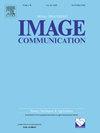Improved multi-focus image fusion using online convolutional sparse coding based on sample-dependent dictionary
IF 3.4
3区 工程技术
Q2 ENGINEERING, ELECTRICAL & ELECTRONIC
引用次数: 0
Abstract
Multi-focus image fusion merges multiple images captured from different focused regions of a scene to create a fully-focused image. Convolutional sparse coding (CSC) methods are commonly employed for accurate extraction of focused regions, but they often disregard computational costs. To overcome this, an online convolutional sparse coding (OCSC) technique was introduced, but its performance is still limited by the number of filters used, affecting overall performance negatively. To address these limitations, a novel approach called Sample-Dependent Dictionary-based Online Convolutional Sparse Coding (SCSC) was proposed. SCSC enables the utilization of additional filters while maintaining low time and space complexity for processing high-dimensional or large data. Leveraging the computational efficiency and effective global feature extraction of SCSC, we propose a novel method for multi-focus image fusion. Our method involves a two-layer decomposition of each source image, yielding a base layer capturing the predominant features and a detail layer containing finer details. The amalgamation of the fused base and detail layers culminates in the reconstruction of the final image. The proposed method significantly mitigates artifacts, preserves fine details at the focus boundary, and demonstrates notable enhancements in both visual quality and objective evaluation of multi-focus image fusion.
利用基于样本依赖字典的在线卷积稀疏编码改进多焦图像融合
多焦点图像融合将从场景的不同焦点区域捕捉到的多幅图像合并在一起,生成一幅全焦点图像。卷积稀疏编码(CSC)方法通常用于精确提取聚焦区域,但它们往往不考虑计算成本。为了克服这一问题,人们引入了在线卷积稀疏编码(OCSC)技术,但其性能仍然受到所用滤波器数量的限制,从而对整体性能产生负面影响。为了解决这些限制,有人提出了一种称为基于采样依赖字典的在线卷积稀疏编码(SCSC)的新方法。SCSC 可以利用额外的滤波器,同时保持较低的时间和空间复杂度,以处理高维或大型数据。利用 SCSC 的计算效率和有效的全局特征提取,我们提出了一种用于多焦点图像融合的新方法。我们的方法包括对每幅源图像进行两层分解,产生一个捕捉主要特征的基础层和一个包含更精细细节的细节层。融合后的基础层和细节层最终重建出最终图像。所提出的方法大大减少了伪影,保留了焦点边界的精细细节,在视觉质量和多焦点图像融合的客观评估方面都有明显的改进。
本文章由计算机程序翻译,如有差异,请以英文原文为准。
求助全文
约1分钟内获得全文
求助全文
来源期刊

Signal Processing-Image Communication
工程技术-工程:电子与电气
CiteScore
8.40
自引率
2.90%
发文量
138
审稿时长
5.2 months
期刊介绍:
Signal Processing: Image Communication is an international journal for the development of the theory and practice of image communication. Its primary objectives are the following:
To present a forum for the advancement of theory and practice of image communication.
To stimulate cross-fertilization between areas similar in nature which have traditionally been separated, for example, various aspects of visual communications and information systems.
To contribute to a rapid information exchange between the industrial and academic environments.
The editorial policy and the technical content of the journal are the responsibility of the Editor-in-Chief, the Area Editors and the Advisory Editors. The Journal is self-supporting from subscription income and contains a minimum amount of advertisements. Advertisements are subject to the prior approval of the Editor-in-Chief. The journal welcomes contributions from every country in the world.
Signal Processing: Image Communication publishes articles relating to aspects of the design, implementation and use of image communication systems. The journal features original research work, tutorial and review articles, and accounts of practical developments.
Subjects of interest include image/video coding, 3D video representations and compression, 3D graphics and animation compression, HDTV and 3DTV systems, video adaptation, video over IP, peer-to-peer video networking, interactive visual communication, multi-user video conferencing, wireless video broadcasting and communication, visual surveillance, 2D and 3D image/video quality measures, pre/post processing, video restoration and super-resolution, multi-camera video analysis, motion analysis, content-based image/video indexing and retrieval, face and gesture processing, video synthesis, 2D and 3D image/video acquisition and display technologies, architectures for image/video processing and communication.
 求助内容:
求助内容: 应助结果提醒方式:
应助结果提醒方式:


